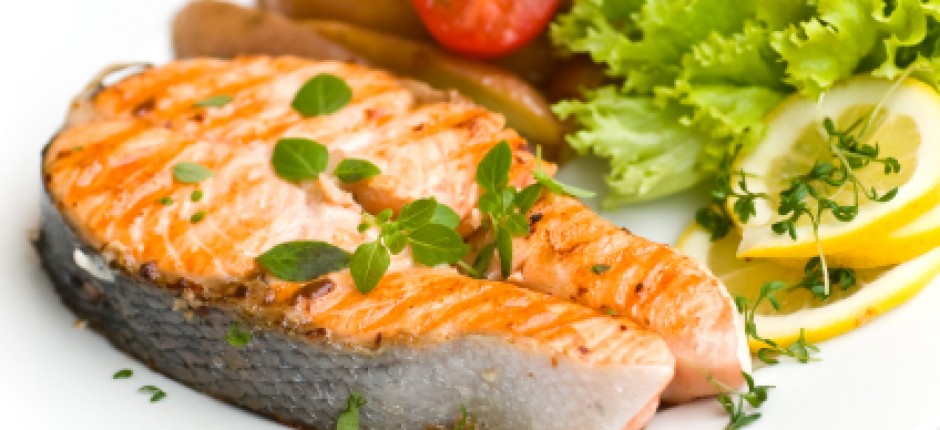Aug 25, 2013
O·ME·GA 101
Omega-3 and Omega-6 are both types of essential fatty acids that our bodies can’t produce on their own, meaning we need to obtain them either through diet or supplements. You can get your Omega-3 from the fat of cold water fish like tuna, cod liver, herring, mackerel, salmon and sardines. Omega-6s come from sunflower seeds, seed oils, corn, sesame seeds, nuts, meat and dairy products. I personally like to take Omega-3 fish oil supplements because our ratio of Omega-6 to Omega-3 averages from 20:1 to 50:1!! Both are good for you, but both have different roles in the body and I can’t stress enough about the importance of getting a BALANCED intake of both. How do you get Omega-3 into your diet?
The Omega-3s have anti-inflammatory benefits and help prevent heart disease, while Omega-6s lower blood cholesterol and support the skin. If you consume more Omega-6s, an unbalanced diet may result in a wide range of health conditions including cardiovascular, inflammatory, and autoimmune diseases. It also doesn’t help when we stuff our faces with junk food, and by junk food I mean food processing and increased consumption of both saturated and trans fats… Don’t be too discouraged though! If you make small efforts and changes to your diet, it’s very easy to get a proper balance of Omegas. It’s mainly about reducing your consumption of junk food and getting proper amounts of certain foods.
1. Let’s start changing things up in the kitchen
Make the change in your cooking oil! Olive oil is the king of all oils. Olive oil is a good alternative because it’s low in omega-6, saturated fatty acids and saturated fat. AVOID safflower, sunflower, vegetable, and corn oil which are jam packed with omega-6 fats.
2. Read the labels
A lot of products contain the omega-6 oils as one of the major ingredients, so read carefully before you purchase. Most salad dressing and mayo products contain oils high in Omega-6 fats, as well as many crackers, breads, pasta sauces and granola bars.
3. Balance your meals and eat your fish!
Fish are the richest sources of Omega-3 fats. Eat fish twice a week! However, be cautious with where your fish comes from. According to the Monterey Bay Aquarium, farm raised Atlantic salmon is now ranked “avoid” because it has some serious health concerns, courtesy to environmental pollutions and high amounts of toxic contaminants. With tuna, watch out for the mercury levels. Quality matters so try to get from the best sources possible. To balance your meals, eat one portion of fatty fish per one portion of red meat or poultry.
4. Go grass!
Grass fed cows has a lower Omega-6 to Omega- 3 ratio by about 75% less! Look out for grass fed chickens as well.
5. Flaxseed it up
Find ways to incorporate flaxseed into your diet. Flaxseed contains alpha-linoleic acid that is converted in the body to Omega-3 acids. It’s also good for vegetarians since it provides them with Omega-3 precursors that don’t come from fish. About a teaspoon a day is recommended for most adults, but talk to your doctor before using flaxseed oil. Use it to dip bread, I mix it with olive oil to tone down the nutty flavor of the flaxseed. You can also drizzle it on salads, soups, smoothies, cold cereal or yogurt. Bon appetite ☺














